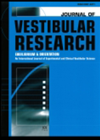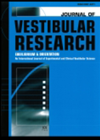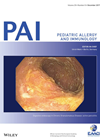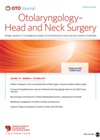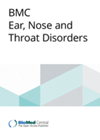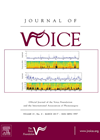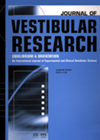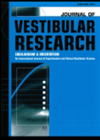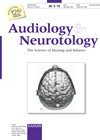
Journal Reviews
Reliability of modified Dix-Hallpike test
Modifications of the Dix-Hallpike (DH) are sometimes necessary when the traditional DH is not feasible. The absence of any formal studies on modified DH was the idea behind this multicentre (three academic centres), prospective, randomised, single blinded and controlled clinical...
The applicability and reliability of SHIMP, a new vestibular test, in adolescents
The video head impulse (now called the head impulse paradigm – HIMP) is now a routine test battery in neuro-otological practice. Few will be familiar with the new suppression head impulse paradigm (SHIMP) test. The key difference is that, in...
Allergy testing in children with beta-lactam hypersensitivity
The beta-lactam antibiotic is commonly used in treating ENT infections in childhood. However, its use can be limited by reported hypersensitivity or allergy to the antibiotic. This is largely attributed to the previous development of skin rashes while being on...
Is clinical HIT as good as vHIT in the emergency room?
Establishing the cause of acute vestibular syndrome (AVS) is critical in the first few hours of presentation in the emergency department. The first question to ask is, “is it due to a peripheral vestibular pathology or a stroke?” This is...
Objective testing for Eustachian tube dysfunction
Eustachian tube dysfunction (ETD) is typically diagnosed based on subjective symptoms and examination leading to wide variation in its diagnosis and management. The search for an objective test has looked at ways of measuring the passage of air through the...
Wearable sensors for assessment of vestibular disorders
This prospective preliminary study describes the use of commercially available wearable inertial sensors (Mobility LabTM) in assessing the functional ability of individuals with vestibular disorders. Traditionally the Romberg’s, Tandem Walking and Fukuda’s Stepping tests were used to clinically evaluate individuals...
What blood tests should be requested to investigate vocal cord paralysis?
Patients who are discovered to have a vocal cord palsy with no obvious cause on history or examination routinely undergo investigations to exclude an underlying pathology. Cross-sectional imaging of the relevant recurrent laryngeal nerve is required, but considerable variability has...
The video head impulse test: an aid to the diagnosis of spinocerebellar ataxias
Spinocerebellar and Friedreich ataxias (SCA and FA) by their nature present in neuro-otology clinics. The diagnosis is ultimately genetic but the authors investigated the characteristics of the VOR using the video head impulse test (vHIT) in order to distinguish between...
Posturography in persistent postural-perceptual dizziness (PPPD)
Those in neuro-otology practice will be familiar with PPPD now appearing in the forthcoming beta edition of ICD-11. This condition combines the symptoms of phobic postural vertigo and chronic subjective dizziness in which anxiety plays a part. The underlying hypothesis...
Acute peripheral vestibulopathy: is it really neuritis?
The pathophysiology of acute vestibular dysfunction has been debated for decades. By seeking to clarify the underlying aetiology, this study muddies the waters further by advocating systemic and intratympanic steroids as first line treatment if the aetiology is uncertain. The...
Vestibular functions of hereditary hearing loss patients with GJB2 mutations
Mutations of the GJB2 gene are a common cause of deafness, being found in 15-25% of cases of congenital deafness. Over 100 mutations are now recognised and may be associated with a hearing loss ranging from mild to profound. This...
Alcohol and the vestibulo-ocular reflex (VOR)
I was drawn to this paper initially for slightly unscientific reasons but in fact it proved a worthwhile read. It describes the effect of alcohol consumption on the VOR of eight healthy subjects as measured using video head impulse testing...

